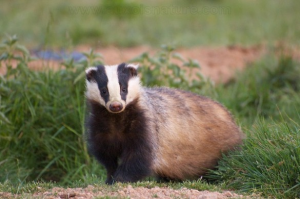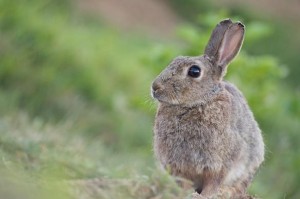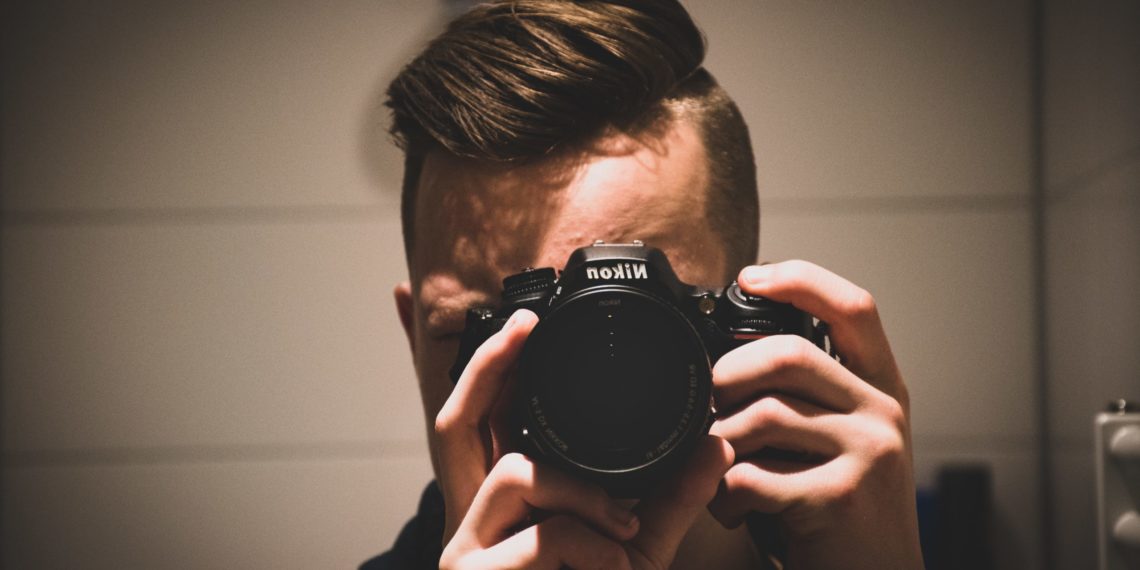You often wonder how the great nature photographers do to give that extra something to their pictures that makes them all fantastic? Well, guess what? You can do the same thing!
This is a guest article from Régis Moscardinifrom the blog Auxois Nature, which treats as its name suggests nature photography. Do not hesitate to go and visit him 😉 He had already written an article on the 5 accessories not to buy in order not to waste your money.
They have two secret ingredients that I’m going to reveal to you in a world premiere… Wait just a little while, I’ll reveal them to you in this article, but you’ll have to earn it by reading the following first 😉.
Secret n°1
What makes nature so difficult to photograph is that it is by definition uncontrollable. This is obvious, but we have to be aware of it! You have no way of directly influencing what you want to photograph. You don’t really see my point? Ok, I’m not drawing you pictures, but these two examples should be enough 😉
- You have prepared a beautiful branch to welcome this beautiful bird that you are following, everything is fine, he is circling around this branch, he is approaching it and … well no, he does not go there and will perch a few meters away on another branch, ugly, it, where the background and the light are not so perfect anymore 🙁
- Do you have in mind that image you saw in a magazine of a sunset reflecting on a lake with the snow-whitened mountain in the background? Perfect! So the day you decide to swallow those 5 hours of walking to take the photo, the alignment of the three elements does not occur and the poster image you will have it … but in your favorite magazine! Yes, we still haven’t found a way to move the mountains to put them in front of the lakes 🙂
In nature photography, you will have understood it: no “turn your head this way, get more in the light, take two steps back, look at the lens with your most beautiful eyes”. The photographer cannot give his orders to his subjects as he could do to his model in the studio. Be careful, I already see you coming in the comments 🙂: I am not saying that the photographer in the studio has an easier task than the one who works in the bush. I just want to underline this difference.
Well then, if the nature is out of controlhow do pro photographers get amazing images out of us? So incredible that one would believe the subject guided by the photographer. But no, of course not, all these beautiful pictures are taken in a natural environment without the photographer guiding the chosen subject in any way.
Well, then.., what’s their secret ?
All right, all right, I’ll let it go: their number one secret is… patience. What do you mean you’re disappointed? Ah, perhaps you were expecting a secret like the hi-tech equipment you used? Or some state-of-the-art software that works miracles? Well no, sorry, it’s much simpler than that, and it’s free! Patience :).
This is the story of a photo that I took to illustrate the importance of patience in nature photography.

To obtain this image of a European badger When he came out of his burrow, I waited for about two hours lying on the ground with a camouflage cloth over me. I arrived at the scene long before the animal’s potential exit. To make your bed a little more learned tonight: badgers are nocturnal animals that only come out of their burrows once the sun has gone down (to capture this characteristic of the animal, I filmed a video of a clan of badgers coming out of their burrows).
Nature photography is not an easy activity and you have to meet many constraints to succeed in some shots. Even if I knew this site and knew the presence of badgers, taking interesting pictures that night was not guaranteed. Why not? Remember, nature is out of control! The shards (another name for badgers – definitely, you’ll go to bed a lot less stupid tonight! 😉 ) could stay inside, go outside but never put themselves in an interesting position, stay out of reach of my telephoto lens and fill less than 20% of the frame, get behind a big clump of grass, stand next to a very unsightly tree trunk, in short, never be as I wanted! That day, I was lucky, this one showed his best side … for at least 3 seconds 🙂 . I would say that during the two hours of sharpening, I probably only had barely three minutes to press the shutter release ! For the other 117 minutes, I simply waited in hiding, hoping that nature would reward me for my patience.
You’ll think it’s a lot of wasted time for not much. Make no mistake: even if many sessions will end in failures, it doesn’t matter! Have you ever just tried to hide to observe nature? It’s amazing how much fun you get, so too bad if sometimes the memory card doesn’t fill up 🙂
Secret n°2
Well, now you know the first secret. And after the first comes… the second. Ruthless logic. So since I’m very bad at keeping the suspense going, I’m going to tell you the second secret right now. You ready to do this? Come on, here’s what will make you take a good nature picture (and not just one, many more 🙂 ): you’ll have to be a naturalist. I repeat 😉 : you will first need being a naturalist before being a nature photographer. I can see from here your eyes all amazed 🙂 it is not about becoming a nature professional, but about becoming a careful observer subjects you’re passionate about.
All great nature photographers are first and foremost excellent specialists in the species they photograph. Either they were first naturalists and then turned to photography, this is the case for example of Frédéric Tillier, a passionate ornithologist. Or they are passionate nature photographers who, in the course of their practice, have become naturalists. But no matter how far they have come, they all have in common an excellent knowledge of the species photographed.
The philosophy to adopt for those who want to progress and take beautiful nature photos is unfortunately not the one adopted by budding photographers. I think that many amateurs first buy all the necessary equipment and then start the adventure (no study on this subject of course but it is the easiest approach). Result: at best, the beginner will quickly give up for lack of success, at worst his obvious lack of naturalist knowledge will put a negative pressure on the photographed species. So do the opposite. Spend time in naturelearn to understand it better, and only then equip yourself if necessary. And this approach will also have the advantage of making you make precious savings for those of you who are in a hurry! Yes, if after a few outings to observe the fox mooching you realize that it is not for you, keep your money and do not buy, or spend for another kind of practice photo if you feel that it is still your thing.
Nice, this secret in your pocket, you now have a great desire to take beautiful nature pictures, but you have to ask yourself “how to become a good naturalist ?» Good question, so follow the guide!
- Get out in the fieldspend time observing, a lot of time observing. I am not asking you to pitch the tent the night before and sleep on the spot in order to have a front row seat for the rising of the Pyrenean eagle 🙂 – although, it is an experience to do: sleeping alone, in the middle of nature, even 500 meters away from home, emotions guaranteed! No matter what subject you choose, the secret is to spend time observing it. I remember the first animal pictures that marked me, I wondered how the photographer was able to be there at the right time and place. Any luck? No, of course not lucky. There were many, many hours of observation to learn about the animal’s life habits.

Rabbit at the exit of a burrow (Pentax K100D + Sigma 70-300 to 260 mm – f/5,6 – 1/125 – 400 ISO – Bean Bag) For that picture of a wild rabbit, I knew he always came out of a specific burrow. So I posted myself a good two hours before he came out (that’s the first secret: patience 😉 ) and I waited for him to show the tip of his ears. Observe mammals, insects, plants (yes, yes, some are only photogenic at specific times of the day), landscapes. Nature must be appreciated intimately.
- Don’t be disappointed if you come home empty-handed…the empty memory card. Nature is capricious, so you might as well know it in advance 🙂 The success of one outing does not bode well for the success of the next. The sunset is spoiled by clouds? The wind plays tricks on you to get a perfect focus on the ladybird? The rabbits don’t come out of their burrow without any particular reason? No problem, that’s the way it is … and put the job back on! The great emotions in nature photography only exist because nature is unpredictable, so when the picture imagined is finally in the viewfinder… what a joy! 🙂
- Sometimes leave your camera at home and just go for a nature hike. Sometimes I just take my binoculars and leave without any particular goal, just for fun. Mine are binoculars and a book of animal tracks, yours might be the guide to identifying flowers, and why not a magnifying glass for insect bites and other animals of the little ones’ world! It is besides during these moments that one can make really unexpected encounters 🙂 Free from the photographic constraint and from the “I must take a picture of it because I will never have the opportunity again ;)” you will surprise yourself to discover elements that you didn’t know camera around your neck. And if you come across an interesting animal, plant or landscape, it will be a great opportunity to come back!
- Don’t just read books about photography… (although many are excellent 🙂 ).
- You can also get books on the ecology, geology, mammals, insects, fauna and flora of your region. Publishers go to great lengths to popularize these fields and make their books exciting. As for me, I’m currently very mammal-oriented (I spend more and more time in the company of wild rabbits, which attract – fortunately for me and unfortunately for them – badgers and foxes). So here’s what I read: the Guide to European Mammals by Delachaux and Niestlé. It’s a mine of indispensable information.
[Note de Laurent : je vous ai fait une sélection des guides naturaliste de référence en fin d’article 😉 ] - Subscribe to a nature magazine.
- Listen and podcast radio shows on this theme (“CO2 mon amour” on France Inter is great).
- Watch documentaries on TV (France 5 broadcasts excellent ones every afternoon).
- Take part in nature outings organised by local associations (the LPO regularly organises bird counting sessions for example). In short, there is no shortage of sources of learning and no excuses can be accepted 😉
[Note de Laurent : pensez aussi aux Conservatoires Régionaux d’Espaces Naturels 😉 ]
- You can also get books on the ecology, geology, mammals, insects, fauna and flora of your region. Publishers go to great lengths to popularize these fields and make their books exciting. As for me, I’m currently very mammal-oriented (I spend more and more time in the company of wild rabbits, which attract – fortunately for me and unfortunately for them – badgers and foxes). So here’s what I read: the Guide to European Mammals by Delachaux and Niestlé. It’s a mine of indispensable information.
And in the longer termWhen your passion is well established, what should you do? Develop your photographic knowledge (mastery of the camera, technique, …) but even more your naturalist knowledge. The photo technique is important, the equipment too, but these two elements alone are worthless without a good knowledge of the terrain.
So, instead of just being a nature photographer, try to be something more… a photonaturist !
Meditate well on these two secrets (which are now no longer 🙂 ), put them into practice and if after that you are still up for it, then I give you an appointment on my blog www.auxoisnature.com where you will find a free guide: “How to choose your equipment to start in nature photography”.
And you, do you have a secret known to anyone to make beautiful nature pictures?
Note from Laurent : Since I was working in the field, I have an idea of the best guides available 🙂. I therefore recommend mainly the Delachaux guideswith 1 notable exception: for a generalist guide on insects, I prefer the Chinery guide.
And don’t forget to share the article! 🙂


![🥇 Presets for FREE Lightroom [2020]](https://big-photography.com/wp-content/uploads/2020/07/presets-para-lightroom-75x75.jpg)

Discussion about this post